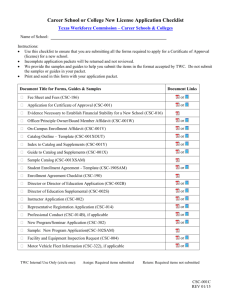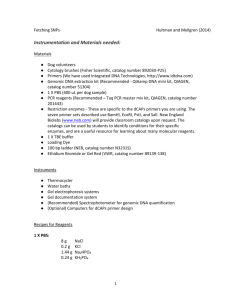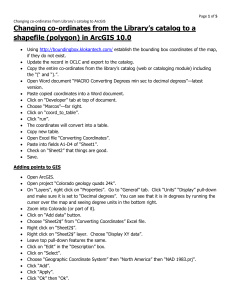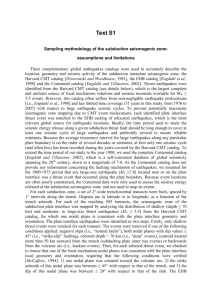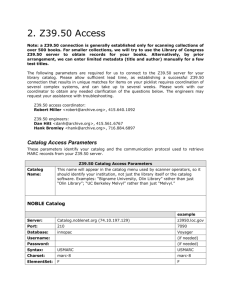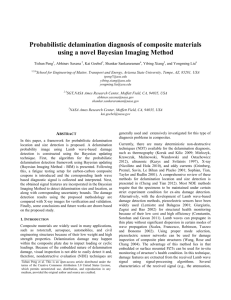ggge20401-sup-0001-suppinfo01
advertisement
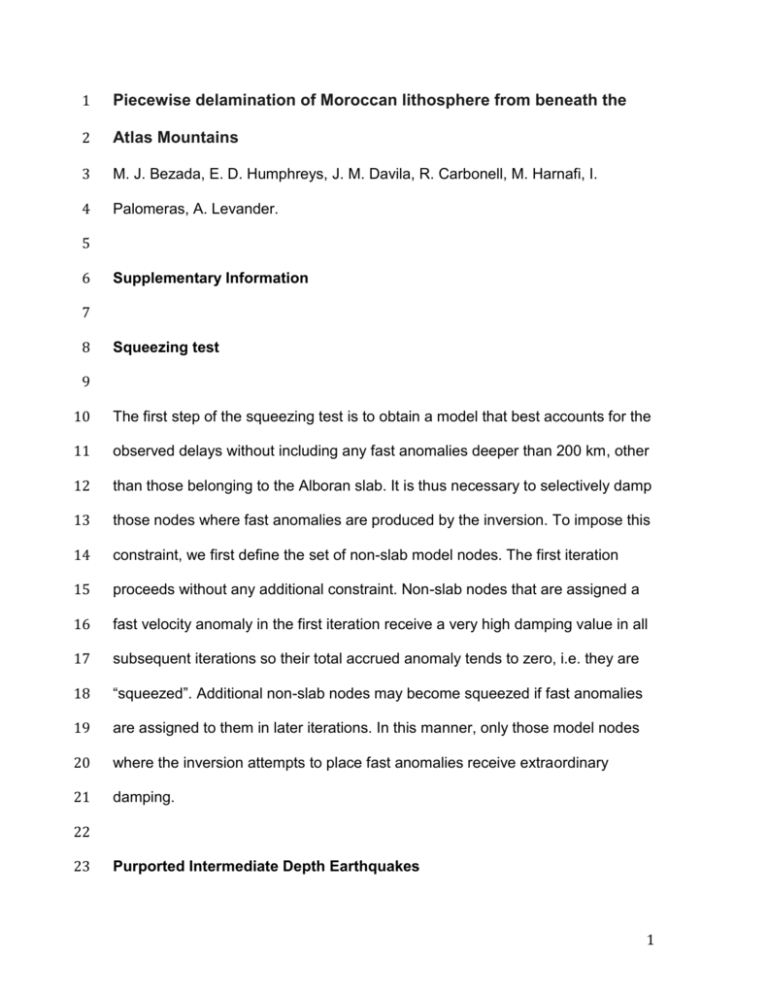
1 Piecewise delamination of Moroccan lithosphere from beneath the 2 Atlas Mountains 3 M. J. Bezada, E. D. Humphreys, J. M. Davila, R. Carbonell, M. Harnafi, I. 4 Palomeras, A. Levander. 5 6 Supplementary Information 7 8 Squeezing test 9 10 The first step of the squeezing test is to obtain a model that best accounts for the 11 observed delays without including any fast anomalies deeper than 200 km, other 12 than those belonging to the Alboran slab. It is thus necessary to selectively damp 13 those nodes where fast anomalies are produced by the inversion. To impose this 14 constraint, we first define the set of non-slab model nodes. The first iteration 15 proceeds without any additional constraint. Non-slab nodes that are assigned a 16 fast velocity anomaly in the first iteration receive a very high damping value in all 17 subsequent iterations so their total accrued anomaly tends to zero, i.e. they are 18 “squeezed”. Additional non-slab nodes may become squeezed if fast anomalies 19 are assigned to them in later iterations. In this manner, only those model nodes 20 where the inversion attempts to place fast anomalies receive extraordinary 21 damping. 22 23 Purported Intermediate Depth Earthquakes 1 24 25 Intermediate-depth earthquakes have been reported to occur beneath the 26 Moroccan Atlas region by several authors [e.g. Buforn et al., 1995; Hatzfeld and 27 Frogneux, 1981] . These earthquakes hold particular interest given that they 28 seem to be unrelated to a subduction process and pose a challenge to the 29 current understanding of intermediate-depth seismicity. They have been 30 associated with delamination [Ramdani, 1998] but their occurrence in what we 31 image as asthenosphere-filled lithospheric cavities produced by delamination 32 makes them even more puzzling. 33 34 Our array provides unprecedented coverage of the region, and the seismic 35 tomography models provide a high-resolution 3D velocity structure of the area 36 that can help produce accurate locations of these events. We selected for 37 relocation two events located in the Middle Atlas and eastern Moroccan Meseta 38 (Figure S1) with catalog depths ≥90 km that occurred during our deployment. 39 The magnitude of these events (ml 2.5 and 2.6) is large enough that they very 40 well recorded by our stations, allowing for confident picking of P and S arrivals. 41 We picked the arrival times for P and S phases and locate the events using a 42 three-dimensional grid-search approach. For hypothetical hypocenters on a 43 mesh surrounding the catalog locations, we calculate travel-times through our 44 velocity model and find the point that minimizes travel-time misfits. 45 2 46 We find that the locations of the best-fitting hypocenters differ laterally from the 47 reported locations by as much as a few tens of kilometers. More importantly, 48 superficial (<5 km) depths fit the arrival times significantly better than the 49 reported catalog depths (Table S1). Given that the depths of these relatively 50 high-quality events were greatly overestimated, we conclude that there has been 51 a systematic miss-location of events in this area, and events thought to be of 52 intermediate-depth are probably crustal in nature. 53 54 References 55 56 57 58 Buforn, E., C. Sanz de Galdeano, and A. Udías (1995), Seismotectonics of the Ibero-Maghrebian region, Tectonophysics, 248(3–4), 247–261, doi:10.1016/0040-1951(94)00276-F. 59 60 61 Hatzfeld, D., and M. Frogneux (1981), Intermediate depth seismicity in the western Mediterranean unrelated to subduction of oceanic lithosphere, Nature, 292(5822), 443–445, doi:10.1038/292443a0. 62 63 64 65 Ramdani, F. (1998), Geodynamic implications of intermediate-depth earthquakes and volcanism in the intraplate Atlas mountains (Morocco), Physics of the Earth and Planetary Interiors, 108, 245–260, doi:10.1016/S00319201(98)00106-X. 66 Event #1 Event #2 catalog preferred catalog preferred latitude 33.038 33.275 33.89 33.72 longitude -4.785 -4.468 -5.98 -5.86 depth (km) 91 0 99 4 RMS misfit (s) 4.1 0.8 6.3 3.3 3 67 Table S1. Catalog locations and preferred locations of the two events analyzed. 68 Our preferred locations are much shallower than the reported ones, residing in 69 the upper crust, and provide a significantly better fit to the observations (Figure 70 S2). 71 72 73 74 Fig. S1. Map of relocated events. Open symbols show catalog locations, solid 75 symbols indicate locations using 3D velocity model. In each case the depth is 76 shown next to the symbol. Inverted triangles show the location of stations that 77 recorded at least one of the events. Thin gray lines show tectonic boundaries for 78 spatial reference. 79 80 4 81 82 Fig. S2. Calculated and observed travel-times as a function of epicentral 83 distance for the two relocated events, and histograms of misfits. Travel-times 84 were calculated through the 3D velocity structure for the original catalog locations 5 85 and our preferred locations. For both events the preferred (shallow) locations 86 provide a significantly better fit to the observations. 6

